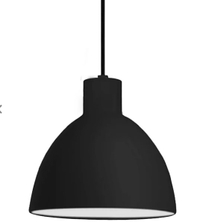How many lights should there be in a kitchen? Designers agree on how to get it right
How many lights should there be in a kitchen? Designers debunk the myths and explain how to beautifully light the space
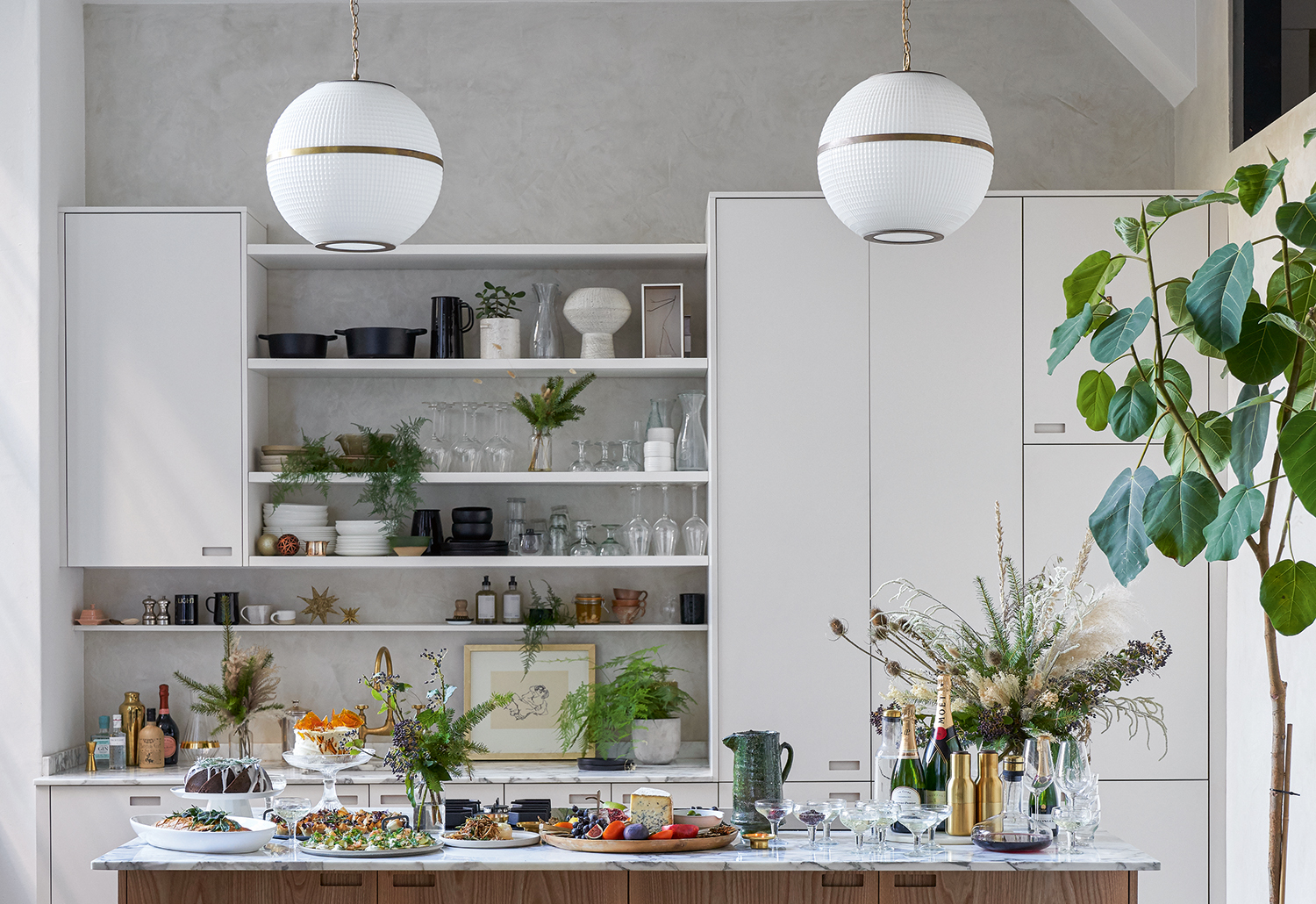

How many lights should there be in a kitchen? Answering this question is not as straight-forward as you might first think, and there are several factors to take into account.
How big your kitchen is is one key consideration, and can impact how many recessed lights you have overhead, or whether you have one pendant or three. Another factor is what the kitchen is used for - is it a busy place to entertain or a small functional kitchen that is purely for cooking in. Kitchen lighting is all about the different types of lighting - from pendants to recessed lights to task lighting and beyond. We speak to the designers to find out their thoughts on kitchen lighting.

Oonagh is an experienced homes writer and editor. With her knowledge of the world of interiors and armed with a strong contacts book of designers and experts, she has spoken to the best in the business to find out what the optimum number of lights in the kitchen should be.
How many lights should there be in a kitchen?
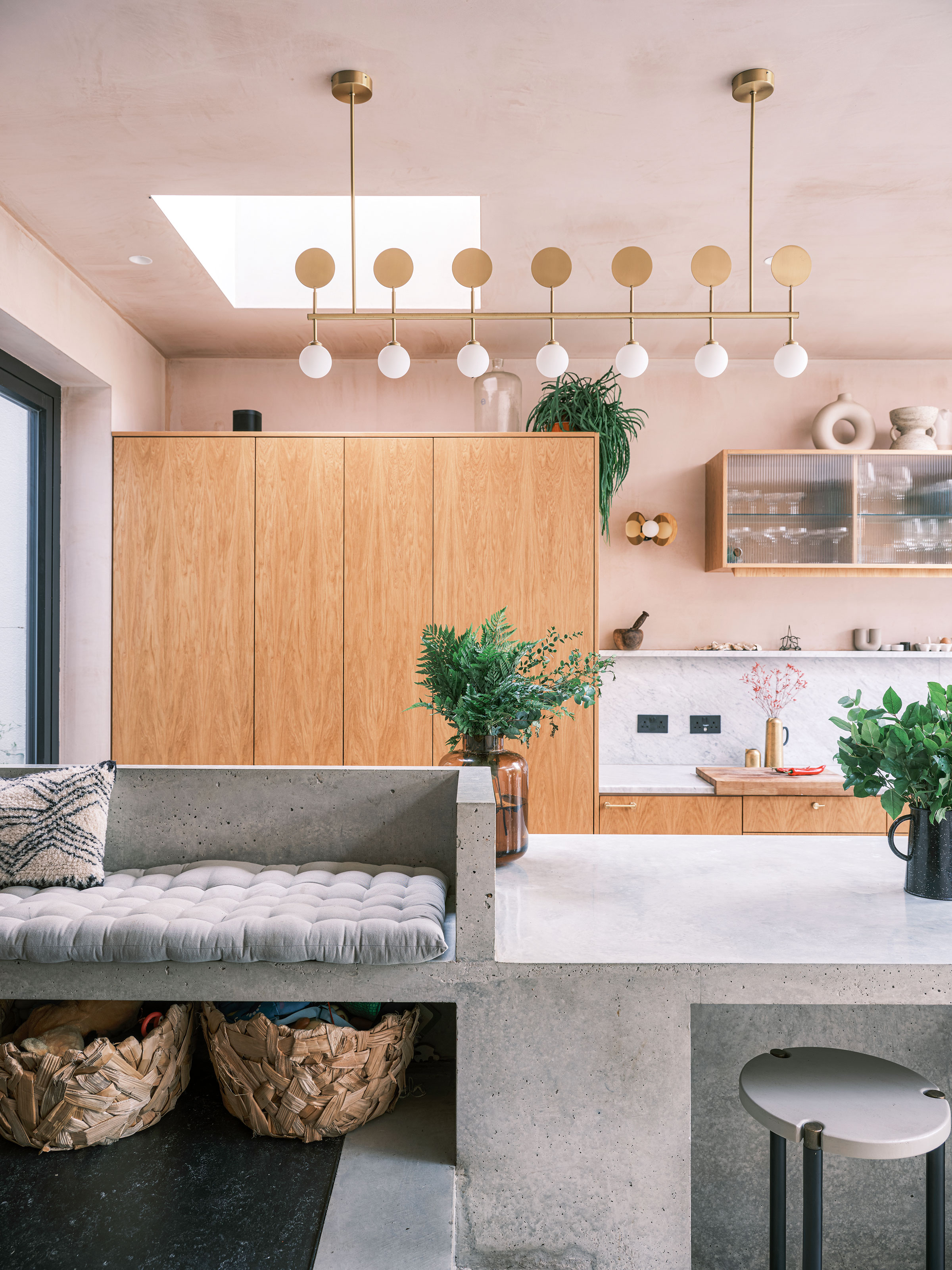
When it comes to hard and fast rules for kitchen lighting, there is no easy way to answer how many lights there should exactly be in the kitchen, because it depends on so many variables and will differ broadly depending on what type or size of kitchen you have.
‘It’s not the amount of light fixtures, but the amount of lighting, that matters,’ says Eugene Colberg, principal at Colberg Architecture. How effective the lighting is lighting depends on size of the kitchen, the height of the ceiling and where the natural light is coming from.
'Most modern kitchens will benefit from a central lighting source plus a combination of practical, space-saving wall lights and spotlights,' says Charlie Bowles, director at Original BTC.
Instead of thinking about how many lights there should be in the kitchen, think about the types of lighting. Ultimately, there should be three different types. Overhead or ambient lighting, task lighting and accent lighting. Overhead might come in the form of recessed lighting, a main spotlight, chandelier or pendant and should be controlled by a dimmer.
Task lighting might be a light that is attached to the wall that helps you focus on a specific job at hand. Accent lighting might shine a spotlight on a certain area of the kitchen you wish to illuminate - like in a cupboard or under a cabinet.
What are the different kinds of lights you can have?
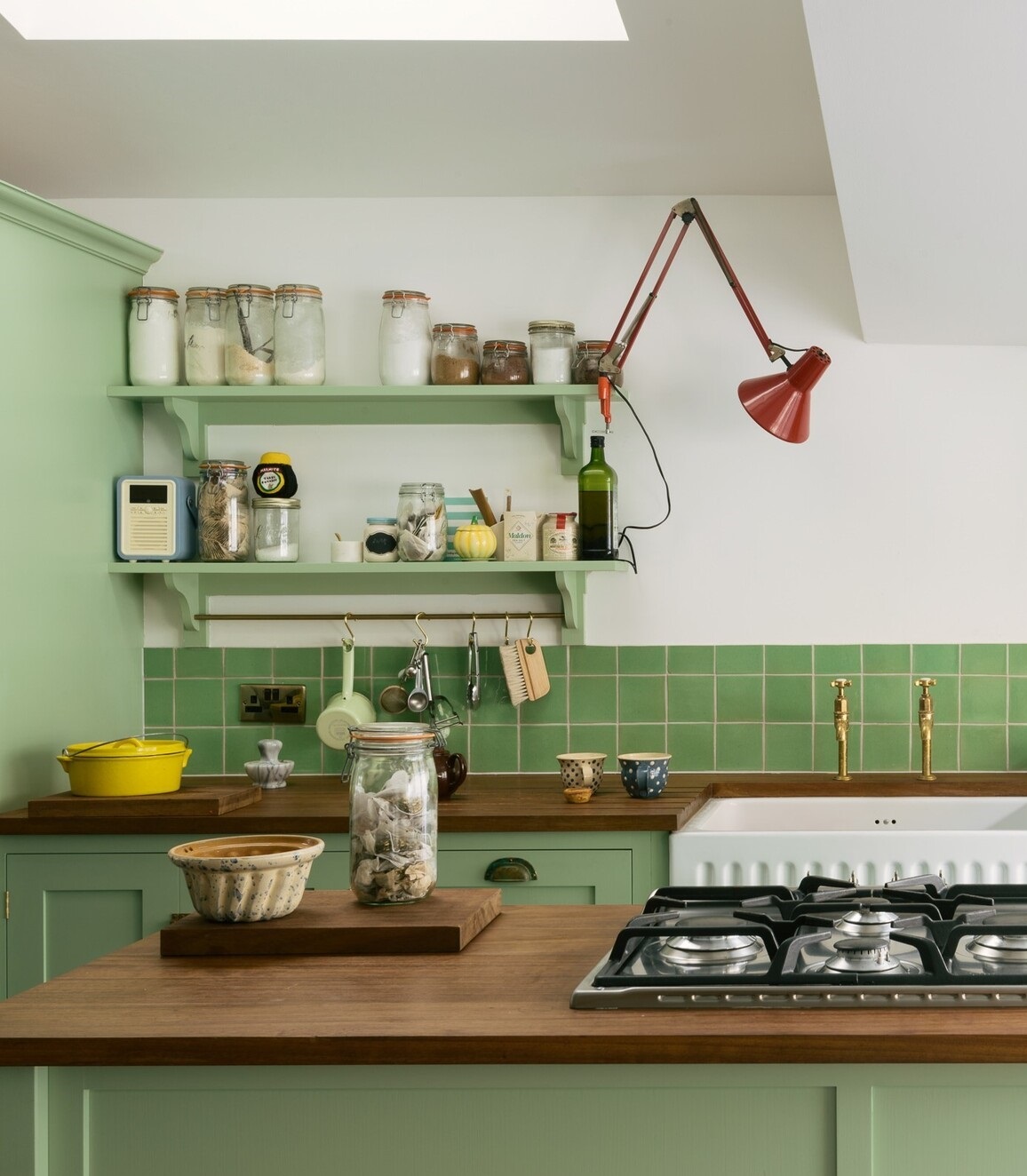
So let's break these types of lights down further. In terms of overhead ambient lighting, lights in the kitchen are typically recessed - that is installed directly into the ceiling, flush-mount - which sits directly on the surface and shines down, track lighting - which is supported on a stylish track or rail, or decorative, such as a chandelier or statement pendant fixture. All can be supported with dimmers, which is a great addition for a kitchen, giving you full power to create any atmosphere or mood you want. This is a good foundation for open plan living areas.
Kitchen task lighting is about creating a shadow-free environment so when you are cooking or chopping, you can really see what you are doing and focus on the job at hand. 'Recessed and track lighting in the ceiling can make the room brighter overall,' says Eugene, 'however when one uses a kitchen, you’re typically facing the countertop, prepping and cooking. When the light is behind you, what you have in front of you is a shadow.' Task lighting is essential to solve this. Go for lights that really shine a spotlight.
Kitchen wall lights, like the ones pictured in this deVOL design are also a great and easy addition to your kitchen lighting scheme. 'Wall lighting is a quick fix, brightening any room and making it more enjoyable to live and work in as well,' says Eugene Colberg.
Other areas of accent lighting might help highlight areas of interest in the kitchen, like cabinet lights or cupboard spotlights. 'It’s a great way to showcase a collection of china, or wall art,' says Charlie Bowles, director of Original BTC. We are seeing under-cabinet lighting taking off as a tool to improve the overall feeling of brightness in the room. 'In terms of what lights work best, nowadays 90 per cent of the lighting available is LED lighting; the color temperature is subjective, though we prefer a warm color temperature,' says Eugene.
How many pendants should you have in a kitchen?
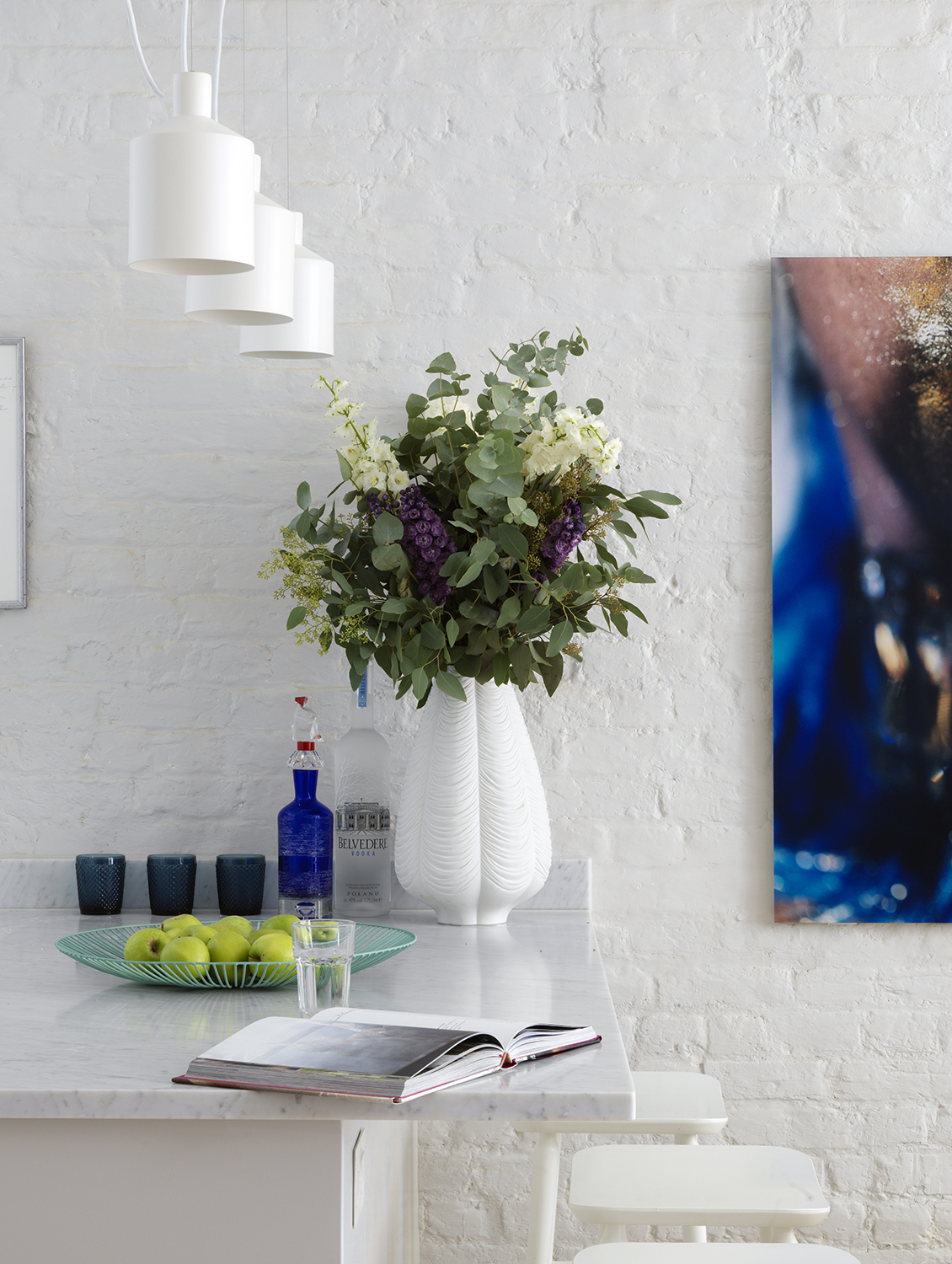
Kitchen pendant lighting is a great option for overhead lighting, beautifully complementing recessed lighting with extra light that can also act as a statement fixture in the space. There are so many different styles to pick from too, from industrial metal pendants to cute ceramic scallop-edged pieces with a rise-and-fall function, to pieces made of interesting fabrics or materials, there is a real range out there that can help establish the interior design style of your kitchen.
Always consider the rule of three when planning your pendant placement. Do you have enough space for three artfully displayed over your island or kitchen dining table? This will give a nice cohesive structure to the design. Alternatively, one makes more of a statement in a smaller space.
One of the most common mistakes with kitchen island pendant lighting for example, is that people go too small,' says Marketa Rypacek of Industville. 'I advise customers to consider using a cluster of several smaller pendants either arranged in a traditional line or varying heights, as this will create an impressive and interesting display.'
Think about how high your pendant is over your kitchen island or kitchen dining table too. 'I love the bottom of a fixture to hit approximately 34 inches above the surface of the table. It is important that it hangs close enough to create intimacy. 'If it’s too high, it feels separate,' says designer Mead Quin.
'A dimmable pendant – or, for a dramatic look, a row of pendants - is useful for switching from functional to relaxation mode, whether over your dining table or central island,' adds Charlie from Original BTC.
A simple pendant style available in chrome, brushed nickel and black. This style will look great in pairs or as a three, hanging elegantly above your kitchen island.
How many lamps should you have in a kitchen?

'Regarding lamps, a floor lamp is probably not a good idea in a traditional kitchen because it can be knocked over and there is no natural place to put it,' says Eugene. 'If the kitchen is large or part of a bigger room, go ahead and try it.'
Think about small accent lights for darker corners too, a cute bulb table lamp won't take up too much space and can be moved around as kitchen cabinet lighting as and when you need it.
How many recessed light fixtures should you have in a kitchen?
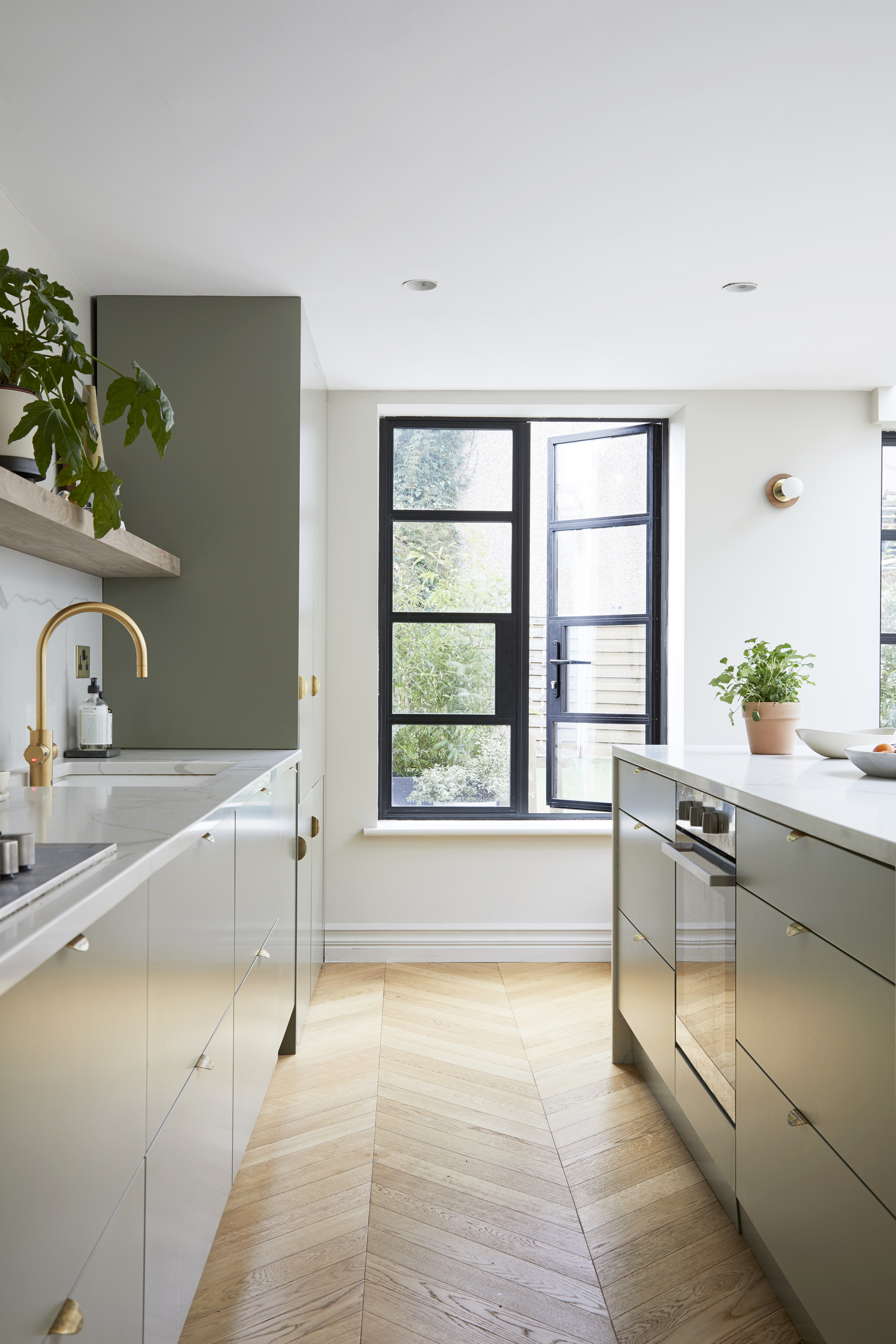
Recessed is a good overhead ambient light and kitchen ceiling lighting idea that can provide an even illumination across the ceiling. They are important for areas that might not have sconces or pendants lighting them and have a wide beam spread. It's hard to say exactly how many recessed light fixtures should be in one kitchen, but a common rule of thumb to follow is that you use one recessed light for every 4 to 6 square feet of ceiling space. Doing so provides even, overall illumination and making sure they are nicely spaced.
'Spacing can really depend on the room's orientation, ceiling height and what light type you are using as well as personal preference,' says Joe Human, designer in NYC and FL for Designs BY Human. 'I am always of the mindset you can't have too much light so everything I design in can be controlled and dimmed or dialed back to get the right atmosphere for the right time,' he adds.
Other things to note when applying recessed lighting to your kitchen is that they shouldn't be in rows, instead they should be evenly spaced from each other. A good rule to follow is that the distance apart is dictated by the size. A 4-inch recessed light fixture should be placed around 4 feet apart, while a 6-inch recessed light should be placed around 6 feet apart. Get this right and you'll get the exact amount of recessed lights right for the room.
Be The First To Know
The Livingetc newsletters are your inside source for what’s shaping interiors now - and what’s next. Discover trend forecasts, smart style ideas, and curated shopping inspiration that brings design to life. Subscribe today and stay ahead of the curve.

Former content editor at Livingetc.com, Oonagh is an expert at spotting the interior trends that are making waves in the design world. She has written a mix of everything from home tours to news, long-form features to design idea pieces, as well as having frequently been featured in the monthly print magazine. She is the go-to for design advice in the home. Previously, she worked on a London property title, producing long-read interiors features, style pages and conducting interviews with a range of famous faces from the UK interiors scene, from Kit Kemp to Robert Kime. In doing so, she has developed a keen interest in London's historical architecture and the city's distinct tastemakers paving the way in the world of interiors.
-
 Turns Out the Coolest New Café is Actually In Your Kitchen — Here's How to Steal the Style of TikTok's Latest Trend
Turns Out the Coolest New Café is Actually In Your Kitchen — Here's How to Steal the Style of TikTok's Latest TrendGoodbye, over-priced lattes. Hello, home-brewed coffee with friends. TikTok's 'Home Cafe' trend brings stylish cafe culture into the comfort of your own home
By Devin Toolen Published
-
 5 Bathroom Layouts That Look Dated in 2025 — Plus the Alternatives Designers Use Instead for a More Contemporary Space
5 Bathroom Layouts That Look Dated in 2025 — Plus the Alternatives Designers Use Instead for a More Contemporary SpaceFor a bathroom that feels in line with the times, avoid these layouts and be more intentional with the placement and positioning of your features and fixtures
By Lilith Hudson Published
